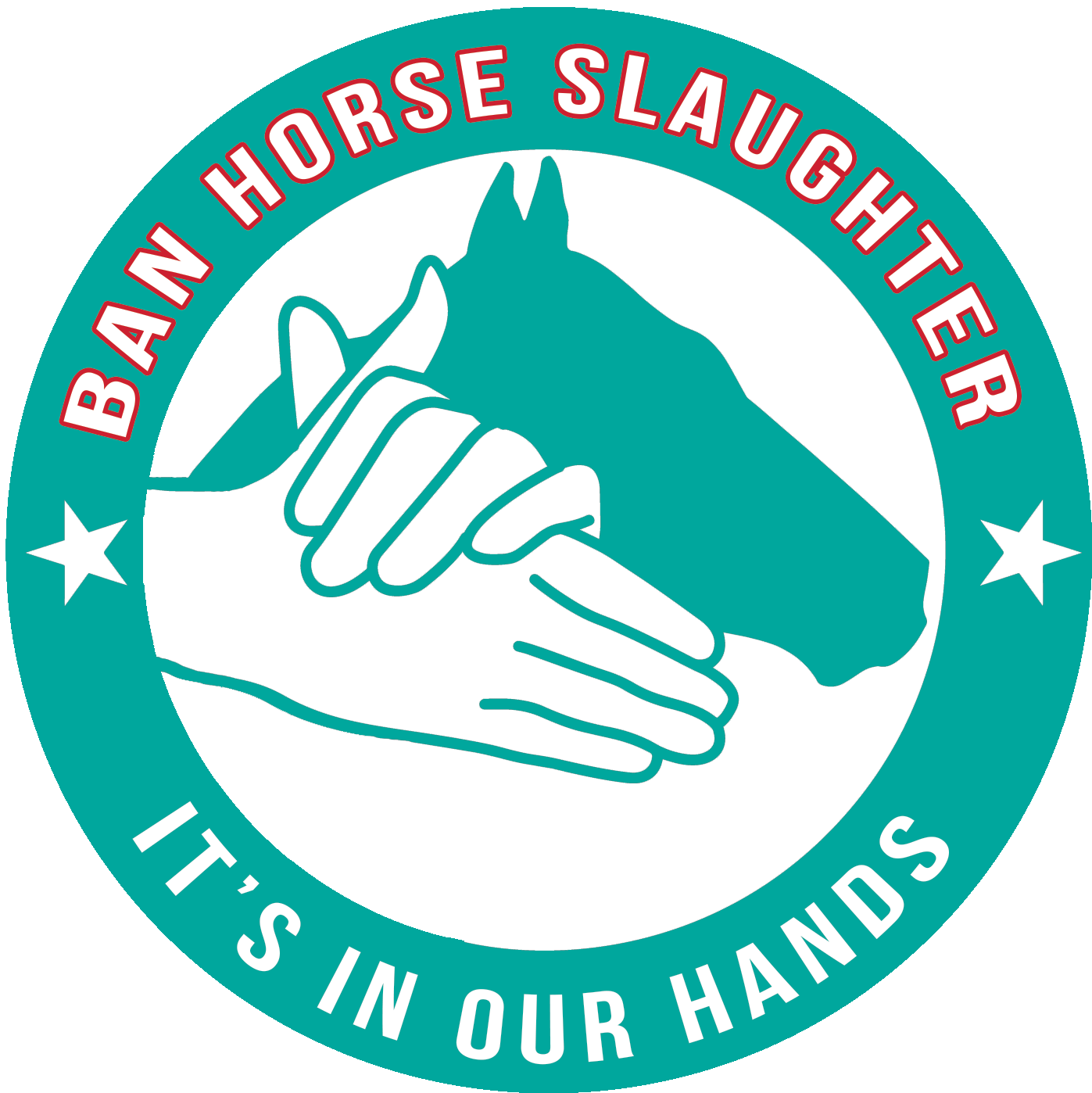The Myth of the Unwanted Horse
Myth: Horse slaughter is a necessary evil without which tens of thousands of American horses will be neglected and abandoned each year. What will we do with all of those “unwanted horses”?
Fact: If we banned horse slaughter today, the vast majority of horses who now go to a horrific death in foreign slaughterhouses would instead go to good homes. The truth is that healthy horses are being bought up at auction by kill buyers who can afford to outbid legitimate owners. In fact, USDA found that more than 92% of horses sent to slaughter are in good condition but responsible buyers and rescue operations are unable to compete with industry middlemen known as kill buyers. Using USDA’s finding, only a tiny fraction of the horse population would require the help of equine sanctuaries or, as a last resort, humane euthanasia once we pass a ban. Make no mistake; horse slaughter is purely a money-making operation, not a humane disposal service for our horse community.
Having a horse requires the responsibility to care for them. Every horse is wanted.
Fact: An historic view of slaughter statistics tells the story. The annual number of American horses sent to slaughter has been as high as 412,000 in 1990 and as low as 64,000 this year, with no resulting oversupply of horses. In 20 years of working on equine issues in the US, I have yet to read a story of surplus horses running down the streets (except those who get out of their pasture by mistake). The current figure represents less than 1% of the entire US horse population and can easily be reabsorbed into good homes. The vast majority would be sold to a new owner and others would be kept longer or placed in a sanctuary or rescue. For the small number unable to find a home or enjoy a good quality of life, a licensed veterinarian can provide humane euthanasia for the same cost as one month’s care for that horse. Something that happens to thousands of horses each year already.
Fact: The “unwanted horse” claim is a myth created by those profiting from and defending the horse slaughter industry. Horse slaughter is a demand-driven business with killer buyers seeking horses to buy. As noted above, the number of American horses going to slaughter has fluctuated significantly over the past two decades but there was no consequential flood of “unwanted horses” (the actual term was coined by a veterinarian and pro-horse slaughter advocate not long after we began the campaign as a way of distracting supporters) even during that wide swing. The slaughter industry wants healthy horses, not our sick and old horses, as the healthy animals fetch more money for this high-end meat industry. So many of the horses that currently go to slaughter can be rehomed and find second careers. And the national effort to end horse slaughter has resulted in heightened coordination in the horse rescue community.
With the founding of the Homes for Horses Coalition more than a decade ago we now have approximately 700 accredited horse rescue organizations around the country, with new groups forming all the time. Those of us leading the charge to ban horse slaughter are actively working to provide humane solutions for America’s horses. Those pushing for horse slaughter have done and continue to do nothing to improve the welfare or future of America’s horses.
Bottom line, when we end horse slaughter, there won’t be tens of thousands of horses in need of rescue. Together we can provide safety and shelter for these majestic animals. After all they’ve done for us, they deserve nothing less.
Please be sure to visit our Action Center to send an email to your Representative and both Senators. Bookmark the page and come back regularly to send a new email. Thank you for your efforts.

